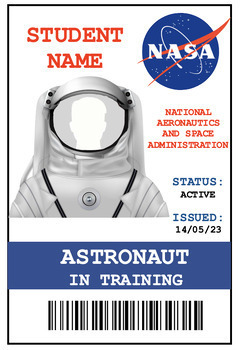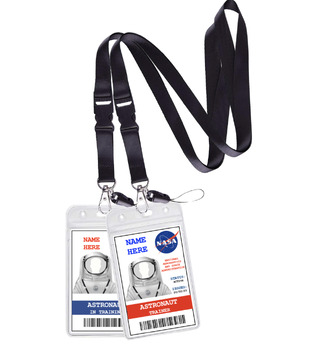Editable NASA Badges
Miss Kernaghans Classroom
1 Follower
Grade Levels
PreK - 6th
Subjects
Resource Type
Standards
NGSS1-ESS1-1
NGSS3-LS4-3
NGSS2-ESS1-1
NGSS1-ESS1-2
Formats Included
- Word Document File
Miss Kernaghans Classroom
1 Follower
Description
Excite your students with these fully editable NASA badges. Upload each student's face into the badge to spark engagement. These are perfect for space room transformations, or a little something extra to engage your students. Grab these editable name badges for students and teachers.
Total Pages
Answer Key
N/A
Teaching Duration
N/A
Report this resource to TPT
Reported resources will be reviewed by our team. Report this resource to let us know if this resource violates TPT’s content guidelines.
Standards
to see state-specific standards (only available in the US).
NGSS1-ESS1-1
Use observations of the sun, moon, and stars to describe patterns that can be predicted. Examples of patterns could include that the sun and moon appear to rise in one part of the sky, move across the sky, and set; and stars other than our sun are visible at night but not during the day. Assessment of star patterns is limited to stars being seen at night and not during the day.
NGSS3-LS4-3
Construct an argument with evidence that in a particular habitat some organisms can survive well, some survive less well, and some cannot survive at all. Examples of evidence could include needs and characteristics of the organisms and habitats involved. The organisms and their habitat make up a system in which the parts depend on each other.
NGSS2-ESS1-1
Use information from several sources to provide evidence that Earth events can occur quickly or slowly. Examples of events and timescales could include volcanic explosions and earthquakes, which happen quickly and erosion of rocks, which occurs slowly. Assessment does not include quantitative measurements of timescales.
NGSS1-ESS1-2
Make observations at different times of year to relate the amount of daylight to the time of year. Emphasis is on relative comparisons of the amount of daylight in the winter to the amount in the spring or fall. Assessment is limited to relative amounts of daylight, not quantifying the hours or time of daylight.




